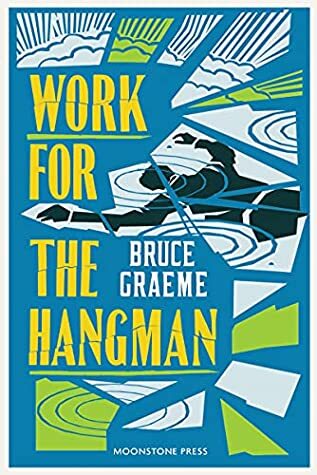Work For The Hangman

A review of Work for the Hangman by Bruce Graeme
Originally published in 1944 and reissued by the excellent Moonstone Press, Work for the Hangman is the fourth in Graeme’s Theodore Terhune series which ultimately ran to seven stories. Once again Graeme is prepared to bend the traditional and formulaic murder mystery genre and has produced an intriguing mix of straightforward detection and an almost inverted murder mystery with a substantial bit of alibi-busting thrown in.
Terhune, who has built himself a reputation for being somewhat of a successful amateur sleuth, much to his embarrassment, is a bookseller by trade and buys a substantial library which belonged to the recently deceased Robert Strudgewick, a wealthy Yorkshireman. Strudgewick, a man of firm and fixed habits, drowned when he fell off a bridge, taking a route back to his house which he never normally took, and while the coroner was satisfied that the death was accidental, some of the locals, including his butler, believe that there was foul play and point the finger at his nephew, Ronald. The butler, knowing of Terhune’s reputation, attempts to interest him in taking up the case.
Meanwhile, Terhune and his occasional female companion, Julia MacMunn, meet Robert Shilling at a party with a new wife in tow, different to the one that Julia had met Shilling with only a year or so ago on a cruise. It transpires that his first wife also met with an accidental death. To make matters more intriguing Shilling is able to provide Ronald Strudgewick with a seemingly cast-iron alibi that shows that he was seemingly thirty miles away in Thirsk at the time of James’ death. Even more coincidentally, Ronald seems to be able to give Shilling a cast-iron alibi for his whereabouts at the time of his first wife’s death.
Julia plays much more of a central role in the investigations than hitherto and, indeed, it is her discovery through a series of amazing coincidences that there is a link between Shilling and Strudgewick junior and impels Terhune to take up the challenge to solve the mysteries. An added bonus of Julia’s more central role is that it we see more of her mother, Alicia, and most of the comedic moments in a narrative that does not take itself too seriously involve her.
Having got to this point, the focus of the book switches to become an investigation of how Strudgewick and Shilling really committed their crimes, how they were able to create such watertight alibis for each other, and what their motivations were other than Ronald wanting to get his hands on Strudgewick’s wealth and Shilling to rid himself of a wife with whom he had grown tired to pursue pastures new. Strudgewick, sensibly, skips the country and the focus concentrates on Shilling whose alibi, little by little, becomes less secure.
In comparison with A Case for Solomon this book seems less inventive, and the pace is more pedestrian. There is too much reliance on coincidence for my taste, starting with the suspects’ initials, and the finale a little rushed and a tad underwhelming. Nevertheless, Graeme keeps the reader engaged, writes with no little humour and has an acute sense of time and place. It is well worth a read, but the curious might be well advised to read his books in chronological order as there are some spoilers of the previous three embedded in the text. I suppose it enhances the sense of a series but I am never certain why writers, particularly of crime fiction where the solution is its principal raison d’être, do it.



